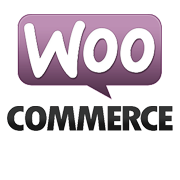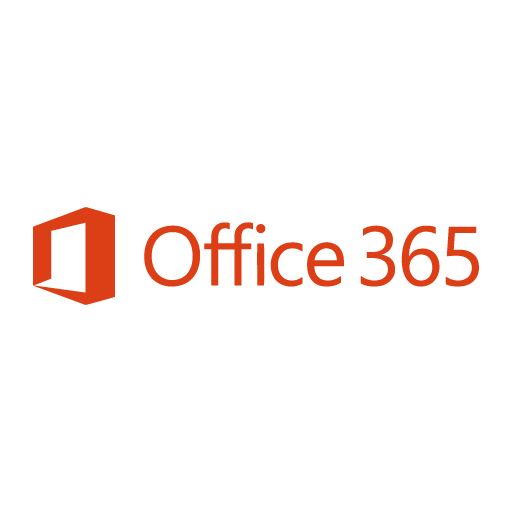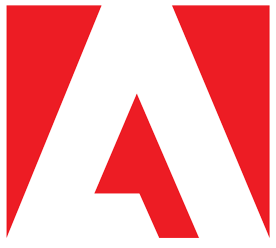How Four Friends Started The #1 Mattress Company In France
Hello! Who are you and what business did you start?🔗
I am the founder of Tediber. Tediber is the leading Bed-in-box company in France. Tediber now sells mattresses, pillows, duvets, baby mattresses, and bed frames online in France, Italy, and Spain.
Many of you might know Casper - we started with the same business model of a bed-in-box mattress delivered right to your door, but it’s manufactured in Belgium. Our product also fits the French expectations for bedding which is very different from American or English beds.
We started 3 years ago and in 2018 we have done a total of 15m€ revenues.

What's your backstory and how did you come up with the idea?🔗
Juan Pablo and Jean-Christophe (2 of my now 3 co-founders) started our first company right after graduation.
They were industrial designers and I was a business student - we met during entrepreneurship class and we started to work on a cardboard furniture project as a school project. Quickly, the projected moved to a passionate humanitarian project: cardboard furniture for natural disasters relief that are manufactured locally, close to the need and thus delivered very quickly.
I learned that selling a cheap product or an expensive product requires almost the same efforts!
I had planned to start my career in private equity finance and decided that this project was an amazing opportunity I could not miss. So with my 2 co-founders, we created our first company: Leaf Supply.


We developed a great and patented product that we sold to many NGOs, national or supra-national organizations like the Red Cross or the UNHCR.
The most important part of our business model was that cardboard is manufactured locally anywhere on the planet: with Leaf Supply we were offering NGOs to make their emergency supply locally, avoiding huge delays, huge costs of air-transportation or duties.
But due to the lack of local supplies usually, NGOs had been working for years in building big continental hubs where supplies (beds, tents, water etc.) are being stocked and picked-up and shipped quickly when an emergency appears anywhere on the planet.
To make it short, our decentralization of the supply process was going against their efforts to rationalize and centralize supply of equipment in emergency situations.
Two years after, we decided to stop working full time on this project.
After this great adventure, I became a co-founder and managing director of a “traditional” e-commerce business selling Lingerie (Lemon Curve) that we sold a couple of years later.
A new beginning
After this second experience I wanted to start a new venture and defined very precisely my criteria:
- Selling a product online. I built up a good knowledge of e-business, e-logistic, e-marketing, etc.
- Develop a product with my ex-partners Juan Pablo and Jean-Christophe. I loved working with them and I loved innovative product development at Leaf Supply. Also, I learned that reselling something online that everyone can sell does not make a lot of sense, so I wanted to create something unique.
- Sell a high-value product. I learned that selling a cheap product or an expensive product requires almost the same efforts!
With these 3 criteria in mind, I was very aware of all opportunities and then I discovered Tuft & Needle, the American company that popularized the bed-in-box in the US.
I wanted to use the same model but for higher-end mattresses and with the continental European expectations in terms of both product and marketing.
Describe the process of designing, prototyping, and manufacturing the product.🔗
The first step was making sure that I could manufacture a very good product and that I could sell for a decent price.
I benchmarked all brands, tried mattresses in shops and at home, cut mattresses and then met 10 to 15 industrials manufacturers of mattresses in Europe.
Don’t listen (too much) to advice: everyone has it. If you listen every one you get a weak, feeble compromise.
I had a very good human & vision match with one of them in Belgium and I then found out that Belgium for mattresses is what Switzerland is for watches - high-end mattresses and components are manufactured in Belgium.
Together with prototypes dozens of product searching for the perfect mattress.
We were a bit stuck in our development, when my 2 co-founders, Juan Pablo, and Jean-Christophe, that are used to product development with their design business (NOCC), gave me a great input:
Instead of looking for universal comfort, we should define first what kind of comfort we would like customers to feel, sleeping on our mattress.
We discovered that in France, there is a real worship for firm mattresses. Indeed, for Frenchies, a soft mattress is a cheap mattress and a firm mattress is a good mattress. This is technically not correct, because this is confusing support and comfort, but we had the feeling we were looking for: “firm and welcoming” at the same time.
It was way easier to work on the product development with this design idea.

Prototyping the mattresses
After 6 months, we had a very good product, had solved most of the industrial issues (like putting a mattress in a box, shipping for a decent price) and we then focused on product design and brand building.
The brand building was a tough and exhausting process.
We wanted the brand to be firm and welcoming at the same time, just like the product.
We also wanted to embody the brand: the mattress is the product you spend the most time with since you spend 30% of your time sleeping. However, most people don’t know the brand of their mattress. Thus, we wanted to embody the brand.
We also liked the fact that the mattress is maybe one of the most important objects in your life, and it is not a high-tech product. Something around the bare necessities was making sense to us and we pulled it into the universe of bears, of the jungle book etc (I’ll get to how we came up with the name below).
Also, we observed that every single mattress brand was talking a lot (too much) about two things we did not really care: (1) the night and (2) the act of sleeping. From our perspective sleeping is just to be smart and full of energy the next day and the technical aspects of the mattress. Also, from our perspective, the customer should not care about what is in the inside!).
After listing all these ideas we had a good brand platform but we could not name the brand.
It took us 2 months of insomnia, research on domain (.com & .fr) availabilities, when I finally found it: I was speaking about the brand platform to a friend during a weekend while skiing and he told me “it makes me think about a Teddy Bear”.
The night after, I googled it for hours and finally figured out that we were simplifying the process of buying a mattress, why not simplify the name too? We were very quickly convinced it was the name we were looking for.
My partners Jean-Christophe and Juan Pablo then did a great job in aesthetic research and design.

First logo trials

First design intention

Designing the boxes
Describe the process of launching the business.🔗
As in my previous businesses, my main investors were family. With my own and family money, we reached 80k€ that helped us to get a 100k€ loan from the bank and 50k€ from public money to support innovation.
This money financed the 50k€ needed for prototyping, lab tests and product development and 50k€ for the financing of the first batch of product to sell. We the money left, we were supposed to build the website and most important to prime the pump with marketing!
About the first website, it was basically home-made, on Wordpress. Just before the launch, a freelance helped me to get a better front-end.
The most painful experience was about getting nice pictures that could fit on a mobile-first website and that were good enough to get you to buy a 650€ mattress you did not try!
For our first production run, we ordered 100 pieces. That was 35k€.
The first clients were my best friends, then their friends and then their friends…
I delivered on my own, making sure the process was perfect and collecting all the questions, the feedback and over-delivering in term of product or experience to create word-of-mouth remain one of Tediber’s main strategy.
We sold 25 Mattresses in the first 30 days and the 100 in 2 months.
A couple of days after the first deliveries, one client called and he wanted to do the first return (we have a 100-day return policy with 100% refund). When I picked up his mattress I had a knot in my gut, thinking I could get a large return rate from all the mattresses I delivered: then he told me he loved it and just wanted to buy a larger one!
Today we have an average 4% return rate which is the lowest in the industry.
Since launch, what has worked to attract and retain customers?🔗
Main marketing expenses in the first six months were Facebook ads and Adwords.
The strategy for AdWords was to focus on google research for high-quality mattresses (“Hotel mattress”, “Memory foam mattress”, etc.).
The strategy for Facebook was to target friends of fans of the page Tediber (all basically friends at the beginning) and to display a picture with this sentence “your friends are sleeping on a Tediber, what about you?”.
This raised some kind of interests and some friends were asking each other “do you know Tediber”. This lead quickly the first 50-70 sales.
TV
2-3 months after the launch, we focused on developing good public relations including some major TV Shows.
Since the very beginning we worked with an agency on PR so we could gain the first mover advantage before another competitor that could emerge in the bed in box model in France.
I was very pushy on journalist and PR strategy and it worked. After this TV show, we sold 100 mattresses:
Brand awareness
After that, we focused on brand awareness and our legitimacy, as we needed to accelerate conversion.
We needed to spend more and more on marketing every day to increase business. So I did our first fundraising for almost 2m€ and during this process, we decided to partner with Aude du Colombier, former marketing director at Google France, to work on brand building rather than only ROI marketing with no asset-building strategy.
Indeed, our analysis was that we could not grow quickly only with AdWords and Facebook since this ad market was not very deep and since 95-90% of the market of mattress industry in France was still offline.
Strengthening the brand and spending (always in a clever way) money offline led us to a lot more brand awareness and traffic on our website.
Since we’ve grown, TV ads & Metro ads have become a key pillar in our marketing approach together with word-of-mouth.

How are you doing today and what does the future look like?🔗
Tediber is today a 20-person company and we are focused on the French market. We just started Italy and Spain since our product and our brand are very close to these markets expectations.
We are very focused on product and customer experience rather than spreading in too many countries.
Our strategy is to continue to build the brand in France, to continue to develop innovative, good products, manufactured locally and sold at a good price.
The main KPIs we use are: Revenues, CPA (cost per client acquisition) and NPS (we have a 80 NPS score)
We’ll be opening our first concept store in Paris in October 2018 to continue to get closer to our customers and to make then experience our products.
Through starting the business, have you learned anything particularly helpful or advantageous?🔗
Being very quick in execution is a key success factor to me.
Not only for all the “business reasons” (going quickly to your market so you can make product changes, saving money on fixed costs etc.) but moreover because you key resources are YOUR ENERGY and saving time is saving energy for later, reaching quickly your expectations and thus never getting low battery ;)
What platform/tools do you use for your business?🔗
My killer toolbox is:
- Smartkeyword for SEO optimizing, with clear and action-focused dashboards
- Ship-up for amazing customer experience in shipping
- My partners NOCC as a design studio for products, physical places but also the brand image.
What have been the most influential books, podcasts, or other resources?🔗
Books:
- Let My People Go Surfing by Yvon Chouinard, for a different point of view on what is entrepreneurship
Podcasts:
- Growthmaker for concrete tips on business building
Advice for other entrepreneurs who want to get started or are just starting out?🔗
Here are the small tips I would give to myself just before jumping in my entrepreneurial life:
- Go quick, it will keep your energy high to see results.
- Do things with passion! Market expectations are pretty high and to succeed you need to put a lot of power. Passion helps a lot!
- Don’t listen (too much) to advice: everyone has it. If you listen everyone you get a weak, feeble compromise.
Where can we go to learn more?🔗
Tediber, the leading french mattress company.

Download the report and join our email newsletter packed with business ideas and money-making opportunities, backed by real-life case studies.

Download the report and join our email newsletter packed with business ideas and money-making opportunities, backed by real-life case studies.

Download the report and join our email newsletter packed with business ideas and money-making opportunities, backed by real-life case studies.

Download the report and join our email newsletter packed with business ideas and money-making opportunities, backed by real-life case studies.

Download the report and join our email newsletter packed with business ideas and money-making opportunities, backed by real-life case studies.

Download the report and join our email newsletter packed with business ideas and money-making opportunities, backed by real-life case studies.

Download the report and join our email newsletter packed with business ideas and money-making opportunities, backed by real-life case studies.

Download the report and join our email newsletter packed with business ideas and money-making opportunities, backed by real-life case studies.

























